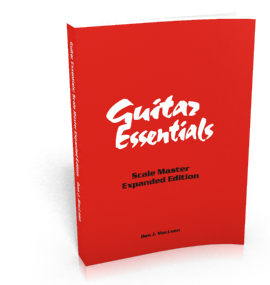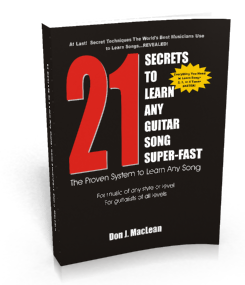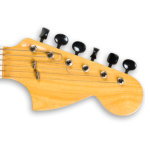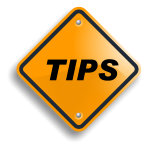Introduction
In this guitar tutorial, we won’t be looking at anything related to the Lord of the Rings Trilogy, or cellphone ring tones. Here we are going to focus on something very important for guitar players of all levels.
What’s really interesting about this important topic is that it is rarely discussed. And surprisingly, even when guitarists learn about it, it’s usually cast aside as one of those things to do later. The main reason for this is because most guitarists underestimate just how powerful this simple thing is. Once guitarists try it, they notice consistent improvement in their playing.
In fact, in my 20 plus years of teaching guitarists, I’ve found that every guitar player that uses it, ends up swearing by it—even those that dragged their feet and waited for weeks to employ it.
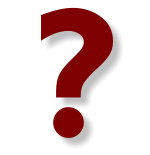 Let me start by first asking you a question…
Let me start by first asking you a question…
What do you think is the best way to improve your guitar playing?
Think back to a time when you had something you really wanted to achieve.
What was your approach? Did you do random things and hope that somehow, someday, you would achieve your goal? Or did you organize some sort of a plan?
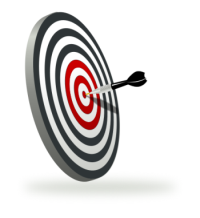 Now I’m no mind reader, but I’m pretty sure that you got organized and created some sort of a plan to achieve your goal.
Now I’m no mind reader, but I’m pretty sure that you got organized and created some sort of a plan to achieve your goal.
When you are organized and have a plan, you are much more likely to achieve a goal and you’re also much more likely to do it in a shorter time frame.
Now let me ask you about how you practice guitar…
Do you have all of your guitar practice materials in an organized and easy to access format? In other words, when you pick up your guitar do you have to sometimes stop mid-practice to go hunting for something you wanted to work on?
For non-professional guitarists, this is a very common scenario.
Let’s say you’ve got about 30 minutes to play. You grab your guitar and start to play. Then a little while in, you realize that you want to work on song X, scale Y or chord Z. The only problem is you don’t have the tab handy and so you’ve got to stop and go on a hunt.
You can probably guess where I’m going with this…
When you have to stop to go and look for something, you loose your momentum. It can sometimes be hard to get back into the groove.
 On top of that, you also loose the practice time. Even if it just takes five minutes to find what you are looking for, it’s still five minutes.
On top of that, you also loose the practice time. Even if it just takes five minutes to find what you are looking for, it’s still five minutes.
If you’ve just got 30 minutes for practice, it means you’ve just lost 17% of your practice session plus whatever time it takes you to get back into the groove!
The Solution
Okay, so what is the solution to this?
It’s very simple. Get yourself a 3 ring practice binder.
This way you will have one central place for everything you need when you practice.
How to Organize Your Guitar Practice Binder
Start by writing in bold ink on the front and spine: “Guitar Practice Binder”. If you get a binder that will allow you to insert paper into the front and spine of the binder, then by all means, let your creative side take over.
 Decide on a place where your practice binder can live. Always return your practice binder to the same spot. You don’t want to waste valuable practice time having to search for the binder. Put it in one place every time.
Decide on a place where your practice binder can live. Always return your practice binder to the same spot. You don’t want to waste valuable practice time having to search for the binder. Put it in one place every time.
Buy some dividers so you can separate the different things you will be working on.
As a beginner, I would recommend that you divide your binder into a minimum of four sections.
- Warm-up
- Scales
- Chords
- Songs
The idea is to set the binder up so you progress through each section of the binder in order.
Depending on time, and your guitar goals, you won’t necessarily go through everything in the warm-up section before you go on to the scale section, but generally you will want to devote some time to warm-up, scales, chords and then songs.
By the way, it’s best to do songs last for two main reasons.
First, by performing your warm-up, scales, and chords, you will find that you will play the songs with more accuracy, and make less mistakes because you’ve warmed-up first.
The second reason for working on songs last, is for the simple reason that songs are super fun to play. If you start by playing songs, it’s very easy to lose track of time and discover that you are out of practice time and you’ve only worked on songs. Now this may not seem like a big deal, but actually it is. Songs are obviously the main reason to play guitar, but to become a better guitar player, there are many other things that need to be mastered. And by the way, these other things will make it easier for you to learn songs and remember them.
That’s why you will want to cover certain key areas every time you practice.
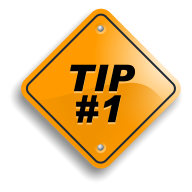 Here’s a tip to get even more benefits from your practice binder. Where possible, create your own neck diagrams of the scales and chords you are working on.
Here’s a tip to get even more benefits from your practice binder. Where possible, create your own neck diagrams of the scales and chords you are working on.
When you draw scales and chords by hand, you activate additional areas of your brain that will help you with learning these chords and scales.
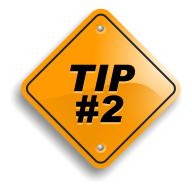 I would also recommend that you set up a section in your binder called “review”. Use this section for stuff that you don’t practice every time you play, but you do want to retain in your memory.
I would also recommend that you set up a section in your binder called “review”. Use this section for stuff that you don’t practice every time you play, but you do want to retain in your memory.
Print or Virtual Guitar Practice Binder, What’s Best?
In our digital world, you could of course create a digital practice binder. It’s a great choice if you travel a lot, or are able to sneak in practice time during lunch breaks. The draw back is it can become a bit more cumbersome to be constantly updating it with new material. It’s way easier to just add a new page into your 3 ring binder and move the older pages to the back for later review sessions. Also since it’s digital, most guitarists won’t take the extra time to hand draw chords and scales and then scan them to digital.
Suggestions for Intermediate and Advanced Guitar Players
As an intermediate to advanced guitar player, there will be several additional sections you should have in your practice binder. These will vary depending on your skill level, and your guitar goals.
Here are some sections you will probably want to include in your practice binder.
- Melodic Patterns
- Arpeggios
- Chord-Scales
- Improvisation
- Comping
- Musicianship
- Rhythm Reading
- Ear Training
- Sight Reading
- Guitar Music Theory
- Composition
This is not an exhaustive list, and it’s not in any specific practice order, but I’m sure it will give you some ideas. What you cover will of course depend on your guitar goals. If your main goal is to play guitar for relaxation, what you will need to cover in your practice sessions will be very different from someone aspiring to become a professional guitarist.
In this tutorial, we’ve looked at the basics of setting up a good practice binder. There are many other things you can include in your binder. But the most important thing is to get one started today, not tomorrow. Even if it’s 2 in the morning and you won’t be able to get a binder until tomorrow, begin the process of planning out what you want to include in your practice binder. Alternatively, see if you can re-purpose another binder. Think about the songs you want to have, the chords, and scales, etc. Think about how you want to organize them.
Just be sure to use your guitar practice binder. I guarantee you will be really surprised by how much more you will accomplish every time you use your guitar practice binder. And as you accomplish more, your guitar playing will improve too! Need I say anymore?
Grab your binder and get started!
If you want to learn more about how you can improve your guitar playing and get maximum results from every practice session, check out the recommended resources that follow…
Recommended Resources
For some very effective and powerful warm-up exercises for beginner to advanced players, consider The EDGE: Power Warm-Ups.
 To learn and master beginner to intermediate guitar scales check out Guitar Essentials: Scale Master Expanded Edition.
To learn and master beginner to intermediate guitar scales check out Guitar Essentials: Scale Master Expanded Edition.
To learn the most important guitar chords, consider Guitar Essentials: Chord Master Expanded Edition.
To totally understand guitar theory and apply it to the guitar, check out the Absolute Essentials of Music Theory for Guitar.

